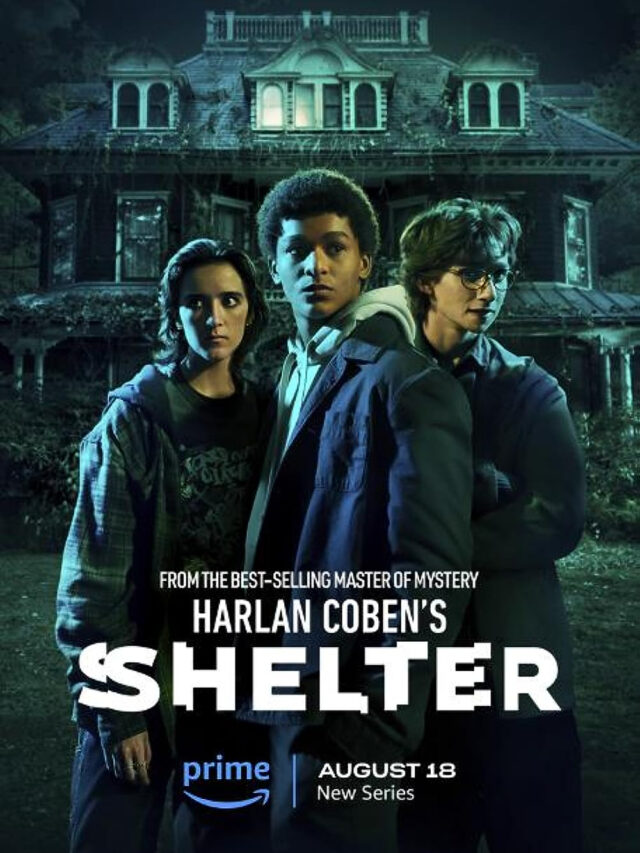Survival horror/thriller films have captivated audiences for decades, with subgenres constantly evolving to deliver fresh scares and suspenseful experiences. One such subgenre that has gained significant attention in recent years is the “escape room” movie. This subgenre, characterized by individuals navigating through intricate challenges and puzzles in confined spaces, has tapped into the primal fear of being trapped and tested under duress. “No Escape Room,” a 2018 film, is an intriguing addition to this subgenre, offering a unique blend of psychological complexity and supernatural elements. In this comprehensive analysis, we will delve into the intricate details of the film, exploring its themes, characters, and the enigmatic ending that leaves audiences pondering the boundaries of reality.
The Rise of No Escape Room Movie
Before delving into the specifics of “No Escape Room,” it’s essential to understand the context of escape room movies within the broader horror/thriller genre. Escape room films have seen a surge in popularity over the last two decades, owing much of their success to franchises like “Saw,” which garnered a devoted following. These movies typically revolve around a group of individuals who find themselves confined to elaborate, sometimes deadly, puzzles and challenges. The stakes are high, with the characters racing against time to solve the mysteries and escape with their lives.
The appeal of escape room films lies in their ability to tap into primal fears. The idea of being trapped, often with a group of strangers, in an unfamiliar and perilous environment strikes at the heart of human anxieties. Moreover, these films explore the human psyche under duress, pushing characters to their limits as they grapple with fear, uncertainty, and moral dilemmas.
Introduction: Michael and Karen’s Unplanned Encounter
“No Escape Room” begins with a clever nod to the genre it belongs to, playfully teasing the audience’s expectations. Karen, a disinterested teenage girl, facetiously asks her friend for help in escaping her father, Michael. This light-hearted moment sets the stage for the central father-daughter relationship, which serves as a focal point throughout the film.
The opening scenes establish Michael’s desire to bond with his daughter, Karen, who appears more interested in her smartphone than in spending time with her father. This generation gap and Karen’s disinterest in her father’s attempts at connection foreshadow the emotional dynamics that will come into play later in the story.
Their journey takes an unexpected turn when their car breaks down near a small town. This seemingly mundane event is the catalyst that propels them into the sinister world of the escape room. It’s essential to note that their decision to explore the escape room is driven by a desire to bond and find common ground, a theme that becomes increasingly significant as the plot unfolds.
The Introduction of Other Contestants
Upon arriving at the escape room’s location, a Victorian-style villa, Michael and Karen are greeted by Josie, the enigmatic hostess of the game. At this point, the audience is introduced to the concept of the escape room, an interactive experience that promises challenges and thrills.
The cast of characters expands as Melanie and Tyler, a young couple, and Andrew, a mysterious individual, join Michael and Karen in their quest. Josie, dressed in Victorian attire, adds an eerie ambiance to the proceedings, further establishing the escape room’s unsettling atmosphere.
Josie presents the group with a customary liability waiver, a document that foreshadows the potential dangers they will face. Surrendering their electronic devices becomes a pivotal moment, symbolizing their isolation from the outside world. While some participants express skepticism, they ultimately comply with the rules, setting the stage for their entrapment.
The Start of the Game: Clues and Challenges
The escape room experience commences as the group finds themselves locked in a room filled with an array of antique items. The film emphasizes the importance of observation and problem-solving, as the characters must decipher clues hidden within the room to progress further.
Each member of the group brings a unique set of skills and perspectives to the challenges. Andrew’s recognition of South American indigenous tribal iconography, Karen’s discovery of a gramophone record, and Melanie’s rearrangement of masks on the wall all play pivotal roles in advancing through the escape room.
The use of UV light to reveal hidden numbers on the masks adds an element of tension and mystery. This segment of the film reinforces the central theme of teamwork, highlighting how the characters must rely on each other’s strengths and observations to succeed in the face of adversity.
Tyler’s Departure and Increasing Tension
The escape room experience takes a darker turn when Tyler, one of the participants, begins to experience unsettling images and auditory hallucinations while examining one of the masks. His decision to leave, marked by uttering the safe word “awake,” introduces an element of uncertainty and fear into the group dynamics.
The remaining participants, Melanie, Andrew, Michael, and Karen, must confront the possibility that the escape room challenges may transcend mere entertainment. Their debate over whether Tyler’s departure is genuine or part of the act adds layers of complexity to their predicament.
As tension mounts, the group discovers a bloodied Josie in a closet, who issues a dire warning about the return of the inventor responsible for the challenges. This revelation shatters any lingering skepticism and forces the characters to confront the possibility that their lives are genuinely at risk.
The Unfolding Nightmares: A Descent into Chaos
The narrative of “No Escape Room” continues to intensify as the characters venture deeper into the escape room’s nightmarish challenges. Karen’s descent into a basement filled with disturbing objects and iconography serves as a psychological turning point.
The film explores the psychological horror aspect as Karen’s mind becomes increasingly invaded by horrifying images and sensations. Her decision to seek refuge in a cellar as she senses an ominous presence highlights the characters’ vulnerability in the face of the unknown.
Simultaneously, Michael’s desperation grows as he searches for his daughter within the confines of the escape room. His encounter with an eerie portrait that transports him to an alternate reality blurs the lines between hallucination and reality, adding an element of psychological complexity to the narrative.
The unexpected death of Andrew further ratchets up the tension, reinforcing the high stakes and emphasizing the characters’ vulnerability in the face of the unknown.
The Quest for the Master Key: Unraveling the Mystery
As the characters’ harrowing journey continues, Michael and Karen’s determination to escape intensifies. They stumble upon a critical revelation—the existence of a master key concealed within the escape room. This discovery led to a crucial moment of teamwork and problem-solving.
Michael’s recollection of a clue from an anatomy journal hints at the location of the master key: inside a woman’s belly. This revelation showcases the characters’ resourcefulness and their ability to adapt to increasingly dire circumstances.
The use of the master key as a symbol of hope and salvation underscores the film’s themes of resilience and the human spirit’s capacity to overcome adversity. It also serves as a pivotal turning point in their quest for freedom.
The Shocking Twist: Time Loops and Unending Nightmares
“No Escape Room” takes a bold narrative turn as Karen and Michael, armed with the master key, believe they have finally unlocked their path to freedom. However, the film delivers its most perplexing and mind-bending revelation yet.
As they open the main door, Karen and Michael find themselves back in the familiar setting of the diner’s restroom. Initially relieved, they soon realize that something is amiss when they witness a past version of Karen entering the restroom and wearing the necklace given to her by Michael.
This shocking twist introduces the concept of time loops and alternate realities into the narrative. The presence of past and future versions of Karen and Michael raises questions about the nature of their predicament and the escape room itself.
The film’s ambiguity deepens as the characters come to terms with the realization that they are trapped in an unending cycle of horror. The implication that the escape room has reset, ready to ensnare more victims, leaves the audience in a state of profound uncertainty.
Interpreting the Ambiguity: Themes and Symbolism
The ambiguity that permeates “No Escape Room” invites viewers to explore various interpretations and themes embedded in the narrative. One prominent interpretation centers on the concept of time loops, where the characters are caught in a perpetual cycle of events. The presence of past and future selves suggests that time within the escape room exists in a fluid and nonlinear state.
Additionally, the film delves into themes of psychological horror, forcing the characters to confront their deepest fears and insecurities. The blurred lines between reality and illusion add layers of complexity to their experiences, challenging their perceptions and sanity.
The escape room itself serves as a metaphor for the human psyche under extreme stress. The challenges and horrors the characters face within its confines reflect their inner struggles and vulnerabilities, mirroring the complexities of the mind.
Ultimately, “No Escape Room” is a thought-provoking exploration of the human condition when subjected to extreme fear and uncertainty. It challenges conventional notions of reality and invites viewers to question the boundaries of perception and existence.
The Impact of Ambiguity on Viewer Experience
The deliberate ambiguity of “No Escape Room” has a profound impact on the viewer’s experience. It leaves audiences with a sense of unease and curiosity that lingers long after the credits roll. The film’s open-ended conclusion, while potentially frustrating for some, catalyzes discussions and debates.
Viewers are encouraged to revisit the film, searching for hidden clues and symbolism that may shed light on its mysteries. The ambiguity transforms “No Escape Room” into a puzzle in its own right, inviting viewers to become active participants in deciphering its secrets.
In this sense, the film’s ambiguity becomes an integral part of its appeal, blurring the line between cinema and interactive storytelling. It challenges viewers to embrace the enigma and draw their conclusions, fostering a sense of engagement and intellectual curiosity.
Conclusion: “No Escape Room” and the Endless Enigma
“No Escape Room” emerges as a unique and thought-provoking addition to the survival horror/thriller genre. Its deliberate ambiguity, exploration of time loops, and psychological complexity set it apart from conventional narratives. The film challenges viewers to confront the unknown and grapple with the boundaries of reality and illusion.
As the characters of Karen and Michael find themselves trapped in an unending nightmare, so too do viewers find themselves ensnared in the enigma of the escape room. “No Escape Room” transcends traditional storytelling, offering a perplexing journey that continues long after the screen fades to black—a journey into the depths of the unknown.
In a cinematic landscape often characterized by formulaic narratives, “No Escape Room” stands as a testament to the power of ambiguity and the enduring allure of the unexplained.






























